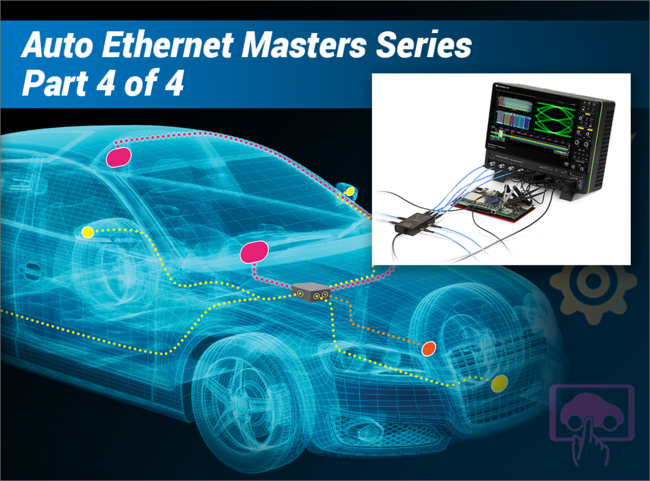Webinar

How to Become an Expert in Automotive Ethernet Testing - Part 4: Debugging PHY Layer Link Communication Learning Lab
How to Become an Expert in Automotive Ethernet Testing
Automotive Ethernet is the becoming the serial data backbone of choice for faster data communication to enable advanced ADAS, infotainment, connected car, and autonomous vehicle technologies. Join Teledyne LeCroy for this 4-part webinar series covering automotive ethernet (BroadR-Reach, 100Base-T1, and 1000Base-T1) fundamentals through advanced testing for electrical link and PHY compliance test to advanced PHY debug.
Debugging PHY Layer Link Communication Learning Lab
In this session (Part 4), we review Automotive Ethernet link communication and explore how to debug and troubleshoot these links using an oscilloscope during an interactive session with live signals. We will look at both the physical and protocol layers during this Learning Lab webinar.
Topics to be covered in this webinar:
- Brief review of Automotive Ethernet topology and signaling
- Review of how the link startup between a Master and Slave occurs
- Explain the elements in the 100Base-T1 frame structure
- Error location in the 100Base-T1 frame
-
Perform debugging process on Automotive Ethernet Links, including:
- signal separation
- isolation of the link startup
- eye diagrams
- jitter measurements
- root cause of failure analysis
Who should attend? Engineers and technicians looking to learn more about the physical layer communication process between Automotive Ethernet devices and how to use an oscilloscope to validate and debug link issues.
What attendees will learn? How to connect to PHY layer devices and how to use oscilloscope tools to trigger, decode and use tools to test and debug communication between an Automotive Ethernet Master and Slave.
Presenter: Stephen Murphy, Teledyne LeCroy Applications Engineer
Can't attend live? Register anyway, and we will send you the recording and slides afterward.